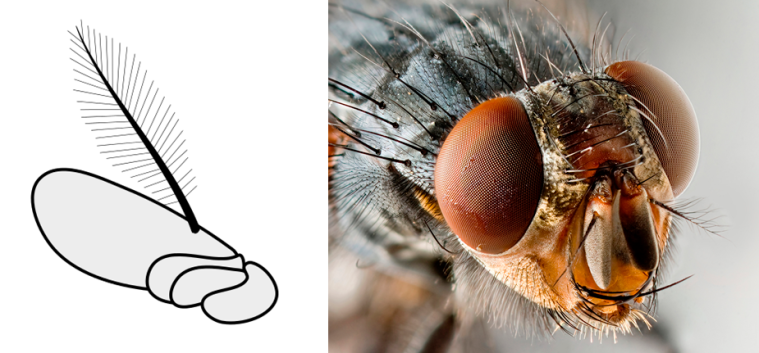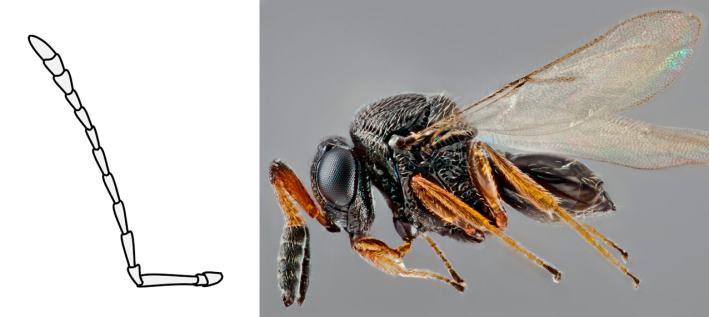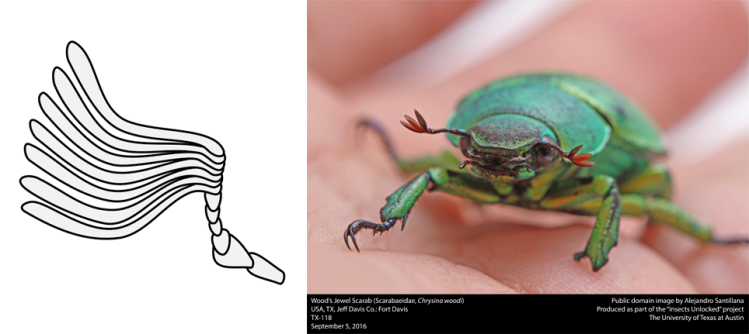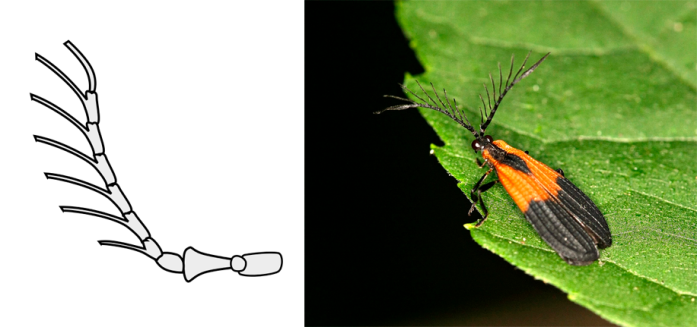MODIFICATIONS OF INSECT ANTENNAE
- Aristate:
- They are pouch-like with a lateral bristle.
- They are used to detect air movement and odors.
- The antenna is three-segmented with a branched arista projecting dorsally from the third segment. Examples: House and shore flies (order Diptera).

- Capitate or Knobbed or head shaped:
- Capitate antennae are abruptly clubbed at the end.
- The antenna starts narrow at the base and gets bigger toward the tip, but only right near the tip.
- Examples: Butterflies (order Lepidoptera), sap beetles (Coleoptera).

- Clavate or Club shaped:
- Clavate antennae are gradually clubbed at the end.
- Examples: Carrion beetles (order Coleoptera)

- Filiform or Thread like:
- Filiform antennae have a thread-like shape.
- All the segments are of about the same thickness and have no prominent constrictions at the joints.
- Examples: Ground and longhorned beetles (order Coleoptera), cockroaches (order Blattodia), Grasshoppers (Orthoptera)

- Geniculate or Elbow like:
- Geniculate antennae are hinged or bent like an elbow at an angel at the distal end of scape forming bent like knee or elbow.
- Examples: Bees and ants (Hymenoptera), Weevils ( Coleoptera).

- Lamellate or plate like:
- The last three segments extend in one side forming a leaf like structure
- Examples: Scarab beetles (order: Coleoptera)

- Pectinate or comb shape:
- The segments of pectinate antennae are longer on one side, giving each antennae a comb-like shape.
- Examples: Fire-colored beetles and fireflies (order : Coleoptera)

- Plumose or feather like:
- Segments produce bunch of hairs from each joints. Also called pinnate or bipectinate.
- Examples: Moths (order Lepidoptera)and male mosquitoes (order Diptera).

- Serrate:
- Serrate antennae have a saw-toothed shape.
- Examples: Click beetles, mango stem borers (order Coleoptera).

- Setaceous or bristle like
- The size of segments decrease from the base to apex
- Examples: Dragonflies and damselflies (order Odonata), cicada (Hemiptera), mayflies (order Ephemeroptera)
